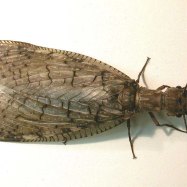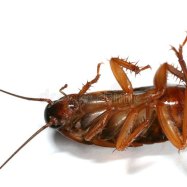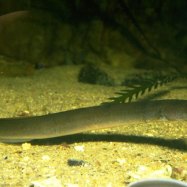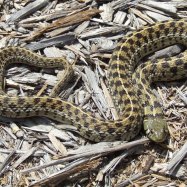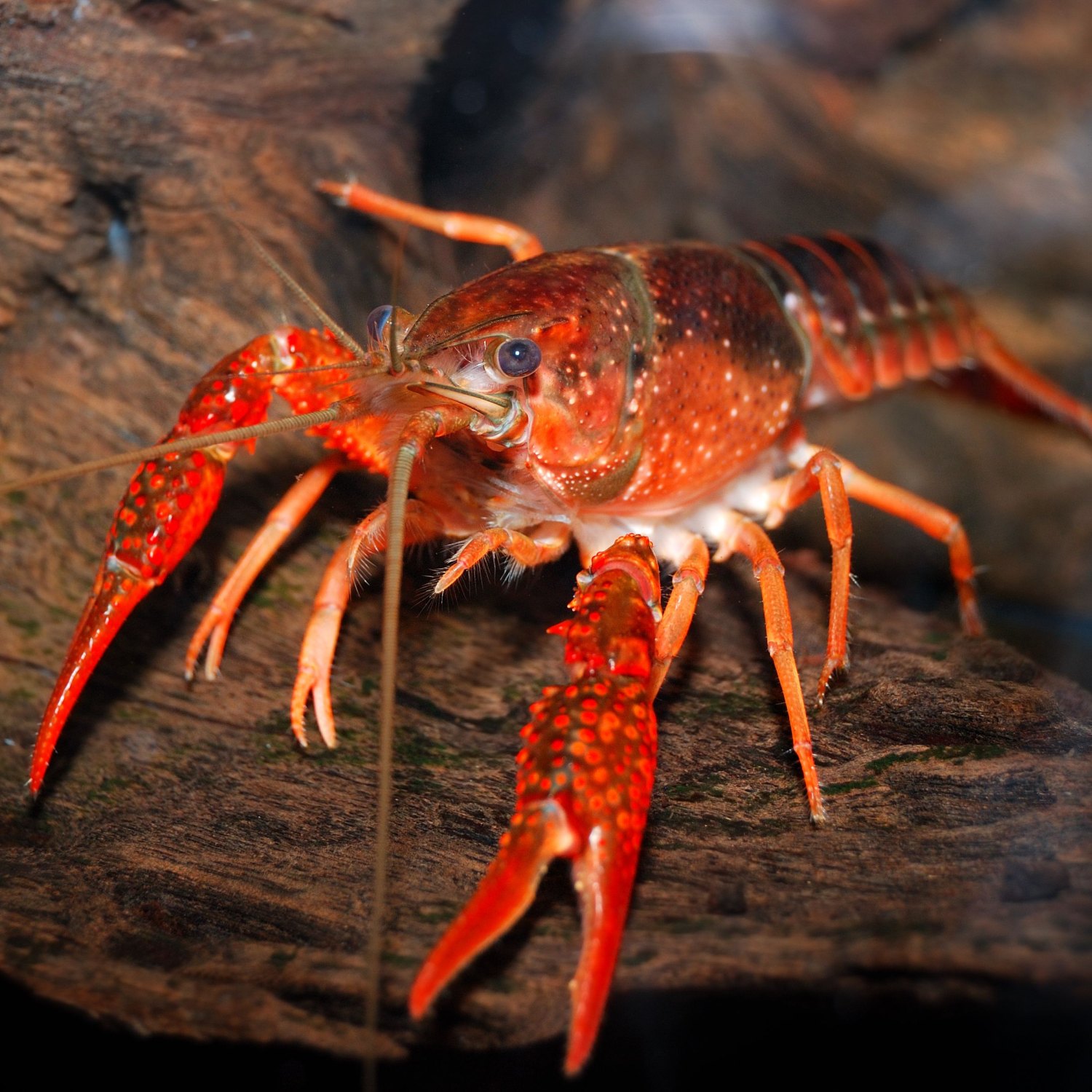
Crayfish
Between 3 and 8 inches
Looking to add an interesting and unique creature to your backyard pond? Consider the crayfish! This small crustacean, ranging from 3-8 inches, can be found in rivers, lakes, streams, and swamps. With a segmented body, hard exoskeleton, and long abdomen, crayfish, also known as crawdads, make for fascinating additions to any aquatic environment. Keep these Astacidae family members in mind when planning your next water feature. #Crayfish #AquaticPets #BackyardPonds
Animal Details Summary:
Common Name: Crayfish
Kingdom: Animalia
Habitat: Freshwater
The Fascinating World of Crayfish: An Incredible Species in the Animal Kingdom
Have you ever stumbled upon a freshwater riverbed or come across a small creek and noticed a peculiar creature scurrying along the bottom? Chances are, you may have come across a crayfish. These fascinating creatures have long been a staple in many freshwater ecosystems, providing a crucial role in maintaining the balance of their surrounding environments. But what are crayfish exactly, and why are they so important? Let’s dive into the world of these incredible creatures and uncover their unique features, behavior, and more.Crayfish, scientifically known as Astacoidea, are a diverse group of freshwater crustaceans that belong to the phylum Arthropoda Crayfish. They are commonly referred to as crayfish, crawfish, or crawdads in the United States, and their scientific classification is Astacidae. Astacidae are a family of freshwater crayfish found in various regions worldwide, making them one of the most prominent and widely distributed crustacean families.
The Kingdom of Crayfish
Crayfish, like all living organisms, belong to a specific kingdom in the animal classification system. In this case, their kingdom is Animalia, which is the broadest level in the system. As the name suggests, crayfish are animals, meaning they are multicellular, eukaryotic organisms that move and consume other organisms for energy. They are also heterotrophs, meaning they cannot produce their own food and rely on external sources for nourishment.The Phylum and Class of Crayfish
Crayfish belong to the phylum Arthropoda, which is defined by the presence of jointed appendages, a segmented body, and an exoskeleton made of chitin. This phylum is one of the largest in the animal kingdom and includes over a million described species, including insects, arachnids, and crustaceans. Within the phylum Arthropoda, crayfish belong to the class Malacostraca, which includes over 40,000 species of crustaceans, such as crabs, lobsters, and shrimps, characterized by their segmented bodies and ten legs Chinese Crested Dog.The Order of Crayfish
Crayfish are part of the order Decapoda, which includes about 15,000 species of crustaceans with ten legs. The order's name, "decapoda," is derived from the Greek words "deca," meaning ten, and "podos," meaning foot. Crayfish have two sets of ten legs, with one set playing a vital role in feeding, while the other set is used for movement and defense.The Incredible Habitat of Crayfish
As previously mentioned, crayfish are found in various regions worldwide, earning them the nickname "global citizens" of freshwater ecosystems. They thrive in a wide range of habitats, including rivers, lakes, streams, and even swamps. They are particularly well-adapted to thrive in freshwater habitats due to their ability to extract oxygen from the water using their specialized gills. In some cases, they can even survive in small ponds or ditches if the conditions are suitable.Omnivorous Feeding Method
One of the most remarkable traits of crayfish is their omnivorous feeding method. They are opportunistic feeders, meaning they will eat almost anything they come across in their habitat. Their diet can vary greatly depending on their location, but they primarily feed on aquatic plants, insects, small invertebrates, and even other crayfish. They are also known to scavenge for food and will feed on dead plants and animals. This varied diet makes crayfish crucial contributors to the ecosystem, as they aid in nutrient recycling and decomposition.Geographical Distribution of Crayfish
Crayfish are found in many regions worldwide, with their native distribution being in North America, Europe, Australia, Africa, and Asia. However, due to their opportunistic nature and adaptability, they have been introduced to other regions like New Zealand and Japan, where they have become established in freshwater habitats. In some areas, their introduction has caused severe ecological damage, as they can outcompete and displace native species.The American Origin
While crayfish are now found in many regions worldwide, their country of origin is still the United States. Different species of crayfish in North America have been used as important sources of food by Native American cultures for centuries, and they continue to be a popular seafood delicacy in the Southern United States.The Colorful World of Crayfish
One of the most striking features of crayfish is their vibrant coloration. They can come in a variety of colors, including brown, green, red, and even blue. This colorful appearance serves many purposes, such as camouflage, mating displays, and warning signals. Some species can even change color depending on their environment or social status.A Segmented Body with an Exoskeleton and Long Abdomen
Crayfish have a distinct physical appearance, with a segmented body, a hard exoskeleton, and a long abdomen. Their segmented body consists of a cephalothorax (head and chest) and an abdomen. The exoskeleton acts as a protective covering, providing support and protection for the internal organs. However, crayfish must molt or shed their exoskeleton several times throughout their life to grow and replace any damaged or old parts.The long abdomen of crayfish is a crucial feature that sets them apart from other crustaceans. It plays a vital role in their body movement and also houses their digestive, respiratory, and reproductive organs. In some species, the abdomen has large claws used for defense, but in most, the claws are small and non-functional.
The Average Length of a Crayfish
The length of crayfish can vary greatly depending on the species, but on average, they measure between 3 and 8 inches. Some species, like the Louisiana Crawfish, can grow up to 16 inches in length, making them one of the largest freshwater invertebrates in the world.The Importance of Crayfish in the Ecosystem
Aside from their unique features and behavior, crayfish also play a significant role in freshwater ecosystems, making them crucial to the environment. As primarily omnivorous scavengers, they help maintain the balance of their surrounding habitats by consuming a variety of organic materials and controlling the population of other species. They also help in nutrient recycling by consuming and breaking down dead plants and animals, releasing valuable nutrients back into the ecosystem. This process aids in the growth of new plants and supports other organisms in the food chain.Additionally, crayfish also serve as a food source for other animals, such as birds, fish, and reptiles. Their extensive burrowing activity also benefits the ecosystem by aerating the soil and creating habitats for other animals, like insects and smaller invertebrates.
The Threats Facing Crayfish
Despite their crucial role in the environment, crayfish population numbers are declining worldwide due to various threats. Habitat destruction, pollution, and the introduction of non-native species are some of the significant threats facing crayfish. In particular, the introduction of non-native crayfish species has had a devastating impact on native crayfish populations, as they outcompete and carry diseases that can decimate local populations.Additionally, the increasing demand for crayfish as a food source has led to overharvesting, often resulting in the removal of large females that are crucial for maintaining and increasing population numbers. Climate change has also become a threat, as rising temperatures and extreme weather conditions can have a significant impact on their habitats and food sources.
The Future of Crayfish
To ensure the continued existence of crayfish, efforts are being made worldwide to protect their habitats, manage populations, and reduce threats. The introduction of legislation and regulations limiting the harvest and trade of crayfish has helped in controlling their population numbers. Educational programs and public awareness initiatives have also been implemented to promote the conservation of these incredible creatures.At the end of the day, crayfish are just one small part of a vast and complex ecosystem. However, their unique features, crucial role in the environment, and captivating behavior make them a species worth learning about and protecting. So the next time you come across a crayfish, take a moment to appreciate the fascinating life it leads and the vital role it plays in the world around us.

Crayfish
Animal Details Crayfish - Scientific Name: Astacoidea
- Category: Animals C
- Scientific Name: Astacoidea
- Common Name: Crayfish
- Kingdom: Animalia
- Phylum: Arthropoda
- Class: Malacostraca
- Order: Decapoda
- Family: Astacidae
- Habitat: Freshwater
- Feeding Method: Omnivorous
- Geographical Distribution: North America, Europe, Australia, Africa, and Asia
- Country of Origin: United States
- Location: Rivers, lakes, streams, and swamps
- Animal Coloration: Brown, green, red, and blue
- Body Shape: Segmented body with a hard exoskeleton and a long abdomen
- Length: Between 3 and 8 inches

Crayfish
- Adult Size: Between 3 and 8 inches
- Average Lifespan: 3 to 8 years
- Reproduction: Sexual
- Reproductive Behavior: Mating occurs after a courtship ritual where the male deposits sperm onto the female's abdomen
- Sound or Call: Crayfish do not produce vocal sounds
- Migration Pattern: Some crayfish species may migrate short distances
- Social Groups: Solitary
- Behavior: Nocturnal and mainly active during the night
- Threats: Predation, habitat loss, pollution, and overfishing
- Conservation Status: Varies by species, some are endangered or threatened
- Impact on Ecosystem: Important for nutrient cycling and serve as a food source for other animals
- Human Use: Used as seafood and in aquariums
- Distinctive Features: Large claws, segmented body, and a long abdomen
- Interesting Facts: Crayfish are also known as freshwater lobsters. They are capable of regenerating lost limbs.
- Predator: Predators include fish, turtles, birds, and mammals
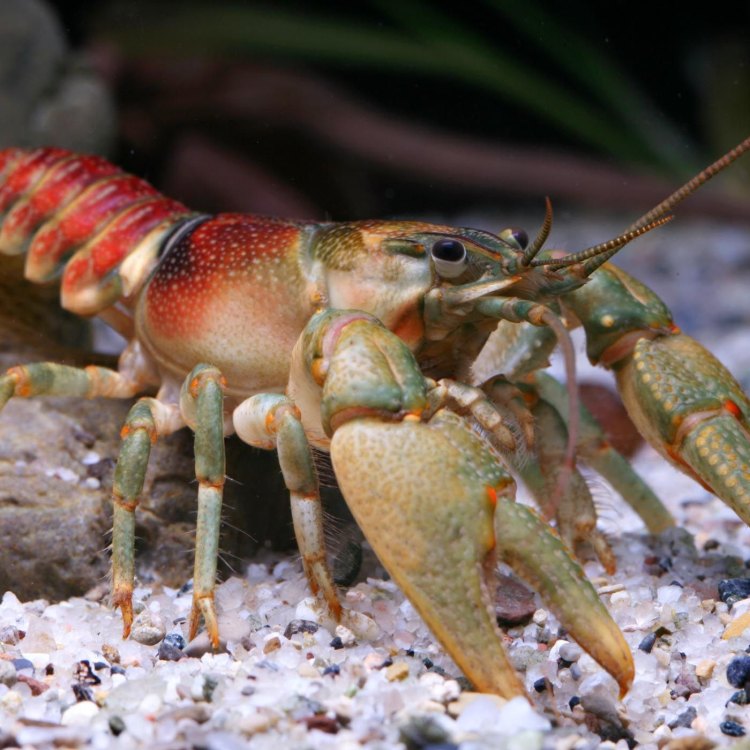
Astacoidea
The Fascinating World of Crayfish: Unique Traits and Importance
Crayfish, also known as crawfish, crawdads, or freshwater lobsters, are intriguing creatures that have captured the curiosity of humans for centuries. These crustaceans belong to the order Decapoda, which means ten feet, and have thrived in freshwater habitats for millions of years. With their distinctive features and important role in ecosystems, crayfish are a crucial part of our planet's biodiversity. In this article, we will explore the unique characteristics of crayfish and their significance in the natural world PeaceOfAnimals.Com.Size and Lifespan
Crayfish come in different sizes, but most adult crayfish grow to be between 3 and 8 inches long. Some species can even reach up to 16 inches in length. They have elongated bodies with hard outer shells known as carapaces, which provide protection and support for their segmented bodies.These fascinating creatures can live up to 3 to 8 years in the wild, depending on their species and environmental conditions. However, in captivity, they can live for up to 20 years with proper care. Their long lifespan is not just thanks to their hardy nature, but also to their ability to regenerate lost limbs.
Reproduction and Mating Behavior
Like most living beings, crayfish reproduce sexually, meaning they require a male and female to reproduce. Mating usually occurs after a courtship ritual, where the male performs a dance to attract the female. During this ritual, the male deposits sperm onto the female's abdomen using specialized appendages called gonopods Crocodylomorph.Females carry the eggs in their abdomen until they hatch, which can take anywhere from three weeks to a few months, depending on water temperature and quality. Interestingly, female crayfish can lay up to 800 eggs at once, which is why they are considered prolific breeders.
Nocturnal Behavior
Crayfish are nocturnal creatures, meaning they are mainly active during the nighttime. This behavior serves as protection against predators, as they are less likely to be detected in the dark. During the daytime, they often hide in crevices or under rocks.Crayfish have excellent sensory organs that allow them to navigate in the dark and find food. They have two pairs of antennae, one for touch and another for taste and smell. They also have compound eyes that help them detect movement and changes in light.
Solitary Creatures
Unlike other crustaceans, crayfish are solitary creatures, and they do not form social groups or colonies. They prefer to live alone and only interact with each other during mating or territorial disputes. This behavior makes them inefficient bycatch for commercial fishing, as they are not caught in large numbers like other crustaceans such as crabs or shrimp.Threats to Crayfish
Unfortunately, crayfish face numerous threats in their natural habitats, which have led to a decline of some species and even the extinction of others. Their main predators include fish, turtles, birds, and mammals, which feed on young or weak crayfish. Humans also pose a significant threat to crayfish through activities such as overfishing, habitat destruction, and pollution.Overfishing, also known as "crayfishing," refers to the excessive harvesting of crayfish for commercial or recreational purposes. This practice has led to the decline of many crayfish species, and some are now listed as endangered or threatened.
Habitat loss is another significant threat to crayfish, as their populations depend on clean and unpolluted freshwater habitats. Human activities such as logging, agriculture, and urbanization have led to the destruction of many wetlands and streams, which serve as critical habitats for crayfish.
Pollution, particularly from agricultural runoff and urban sewage, can also impact crayfish populations. Pesticides and fertilizers can contaminate their water habitats, leading to deformities, reduced reproductive success, and even death. Lastly, invasive species, such as the rusty crayfish and the red swamp crayfish, pose a threat to native crayfish by competing for resources and spreading disease.
The Role of Crayfish in Ecosystems
Crayfish play a crucial role in freshwater ecosystems by serving as a food source for other animals. They are opportunistic feeders, meaning they will consume almost anything they can find, including algae, plants, insects, worms, and even other crayfish. This omnivorous diet makes them a vital link in the food web, and their presence helps maintain a healthy balance of species in their habitats.But their importance goes beyond being prey. Crayfish also contribute to the cycling of nutrients in freshwater ecosystems. They dig tunnels and burrows in the sediment, which acts as a natural filter, improving water quality and providing shelter for other animals.
Human Use of Crayfish
Crayfish have been an essential source of food for humans for centuries. Native Americans were the first to harvest them and use them as a food source, and this tradition continues today. In the United States, Louisiana is the top producer of crayfish, harvesting over 100 million pounds every year. People also catch crayfish for recreational purposes, such as fishing and trapping, especially in the southern states.Aside from being used as seafood, crayfish are also popular in the aquarium trade. They are often kept as pets, and some species, such as the electric blue crayfish, can be valued at over $100. However, their popularity in the aquarium trade has also led to some negative consequences, such as the introduction of invasive species in new habitats.
Distinctive Features of Crayfish
Crayfish are easily recognizable due to their distinctive features. They have a pair of large claws, which they use to grab and crush food, defend themselves, and dig burrows. These claws can also vary in size and shape, depending on the species and their specialized roles.Their segmented bodies are also a notable feature, with each segment covered in a hard, thick shell. Crayfish also have a long, segmented tail, or abdomen, that they use for swimming and balance. Some species have a spear-like projection on their tail, which they use for defense against predators.
Interesting Facts about Crayfish
Crayfish are not just fascinating creatures, but they also have some interesting traits that make them stand out among other crustaceans. Here are some fun facts about crayfish:- Crayfish can regenerate lost limbs. If a crayfish loses a claw or a leg, it can grow back a new one within a few molts.
- Crayfish are also known as "freshwater lobsters" due to their physical and behavioral similarities to their marine counterparts.
- Crayfish have a specialized posture they use to intimidate predators. They arch their back and raise their claws, making themselves look more massive and threatening.
- Some species of crayfish can migrate short distances, usually in search of food or during seasonal changes.
In Conclusion
Crayfish may seem like ordinary creatures, but they possess unique traits and play a significant role in freshwater ecosystems. Unfortunately, many crayfish species are under threat due to human activities and environmental changes. It is crucial to recognize their importance and take steps to conserve their habitats and populations. By doing so, we can ensure that these fascinating creatures continue to thrive and contribute to the natural world for generations to come.
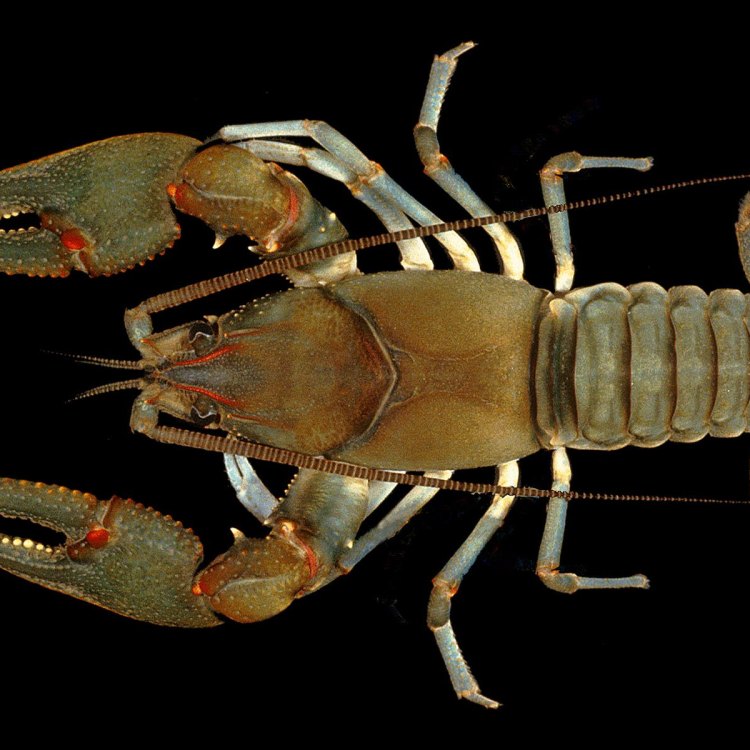
The Fascinating World of Crayfish: An Incredible Species in the Animal Kingdom
Disclaimer: The content provided is for informational purposes only. We cannot guarantee the accuracy of the information on this page 100%. All information provided here may change without prior notice.

